ear health
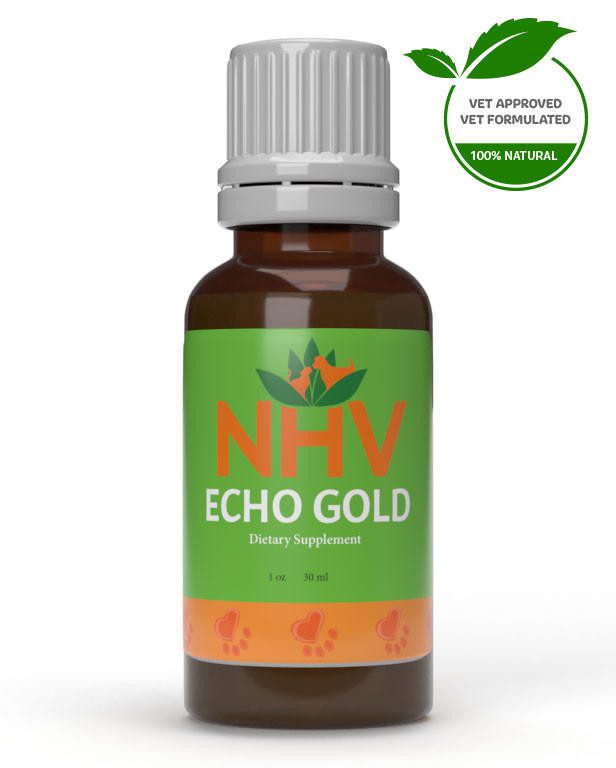
free shipping over $100 (USA & Canada)
1-877-937-4372 the pet expert hotline

Otitis is inflammation of the ear. Since it can occur in multiple areas of the ear, it’s usually distinguished as otitis externa (of the passage of the outer ear), otitis media (of the middle ear), and otitis interna (of the inner ear; labyrinthitis).
If you suspect that your cat or dog has otitis, it’s best to start with a trip to the vet. If your vet’s diagnosis is otitis, they can prescribe the treatment your pet needs. NHV can help too, with natural ear supplements for dogs and for cats.
It is inflammation of the external ear canal. In many cases, the ear pinna (flap), and middle ear are both involved.
Many different factors are involved in the development of otitis externa in the ears of dogs or cats. These include predisposing factors, primary causes, and perpetuating factors. Predisposing factors alter the environment of the ear canal, allowing secondary bacterial and yeast infections to develop. It occurs more in dogs than in cats.
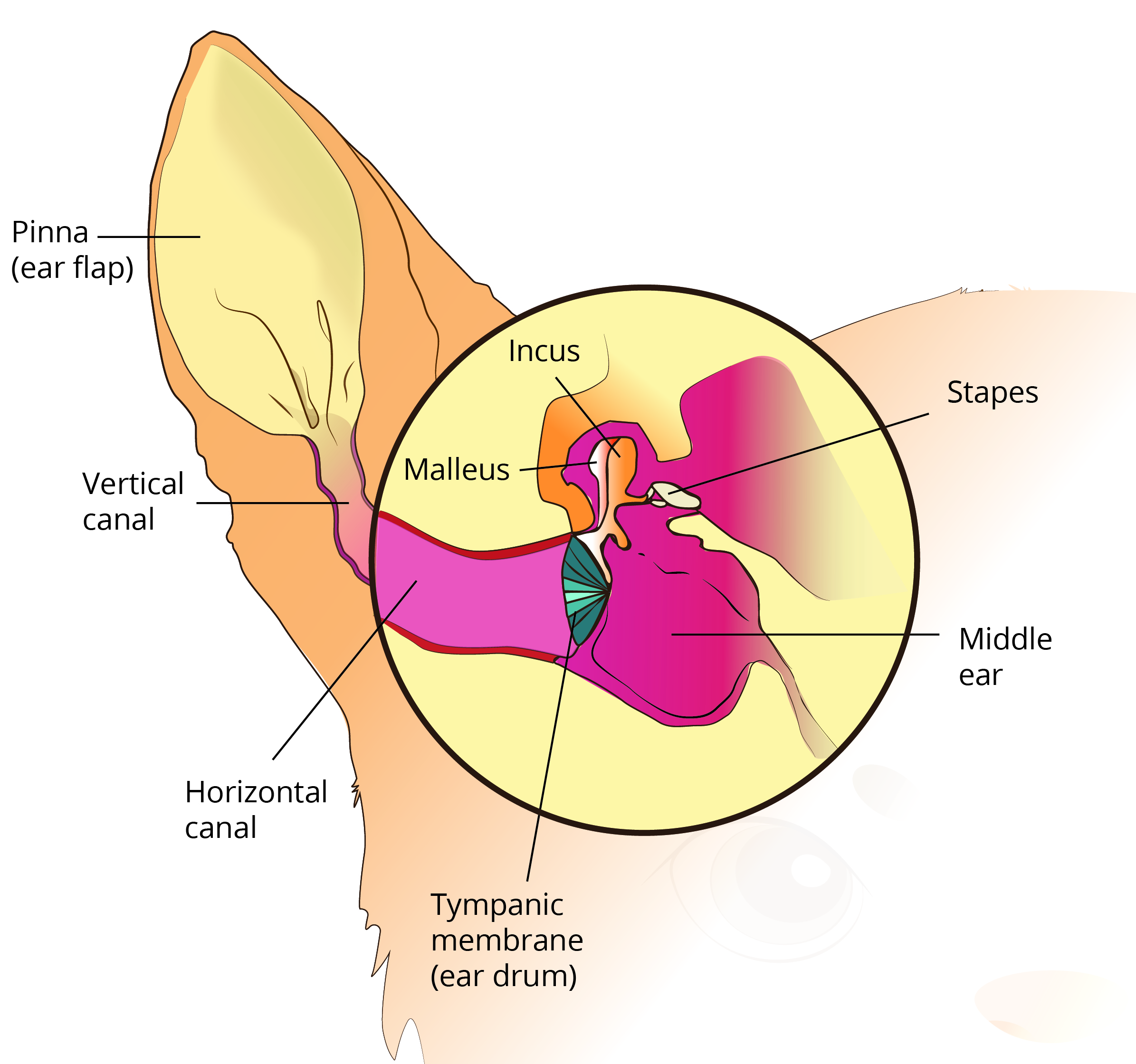
Some of the symptoms of otitis externa in dog’s ears include discharge and odor from the ear, redness and swelling of the ear, rubbing or pawing at the ear, shaking of the head, and decreased hearing. While it’s more prevalent in dogs, otitis externa in cats is also possible.
Physical and dermatologic examinations are performed to identify predisposing factors and primary causes of otitis in dogs and cats. Diagnosis of underlying diseases often requires further testing such as laboratory and hormonal tests, allergy testing, skin scrapings, and biopsies.
The goal of treatments for otitis in dog and cat ears is to remove debris from the ears, relieve inflammation, resolve infections, control predisposing and perpetuating factors, and treat the primary causes.
Echo Gold for ear infections can help soothe and relieve pain and inflammation that is caused by ear mites, allergens, insect bites, foreign particles, food allergies, parasitic mites and fungal infections. Otitis in dogs from ear infections can be detected if there is swelling, unusually frequent head shaking, itching, smelly odor, waxy discharge, redness and flaking, or bumps on the skin. It helps to reduce inflammation of your dog’s ear canal, helps eliminate ear mites, reduces infection-causing triggers, and reduces itching and scratching
Alge-Ex helps prevent allergies and supports pets suffering from environmental allergies and hay fever. It also helps to reduce symptoms during an acute allergy attack. In fact, Alge-Ex actually helps support histamine release caused by immune response activity. It can even reduce symptoms of airborne allergies such as itchy eyes, face, and sneezing and may reduce inflamed or scabbed skin.
It is an inflammatory condition of the structures of the inner ear, one of several varieties of otitis in dogs and cats.
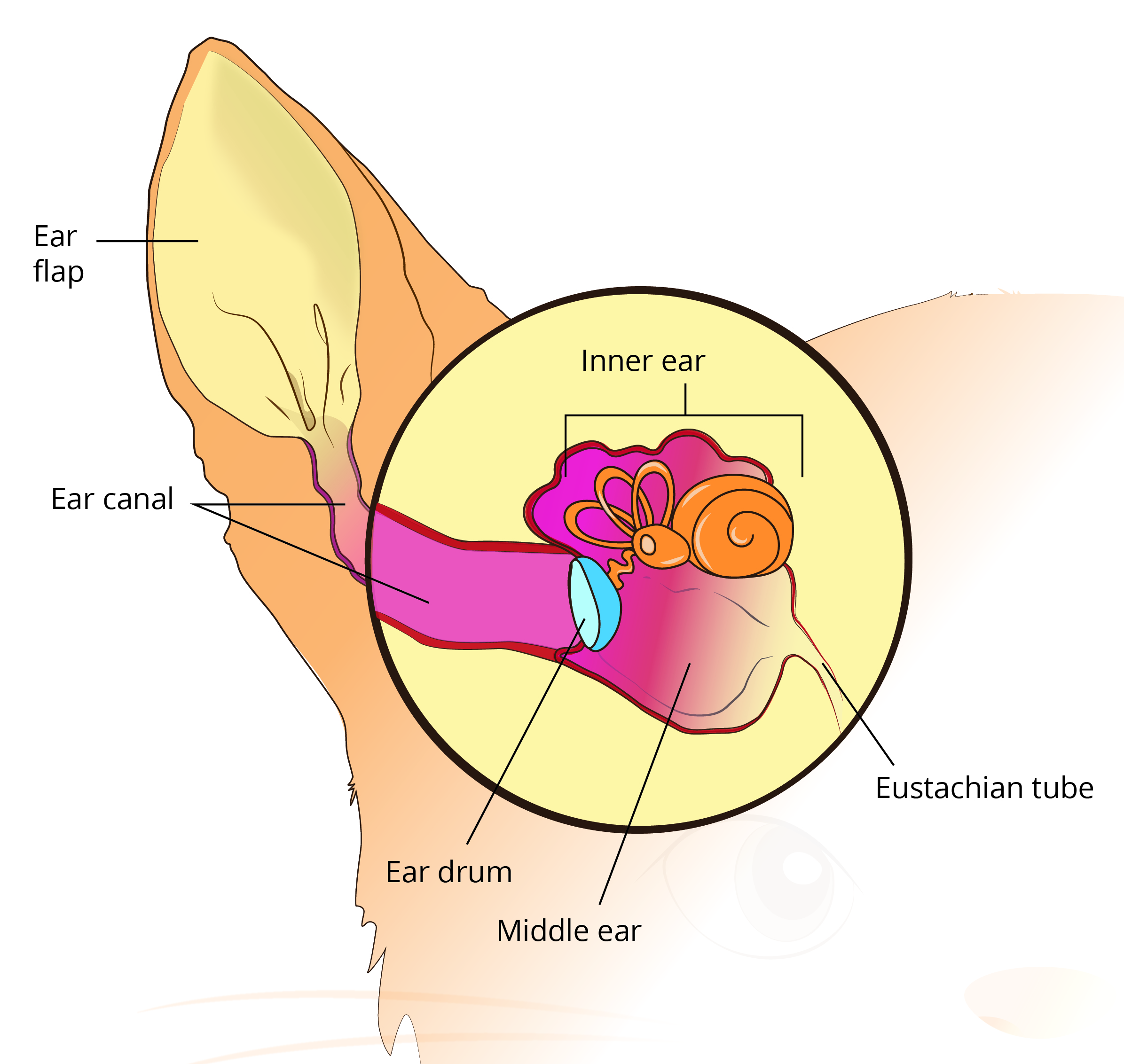
Symptoms of otitis interna in dogs and cats may include head tilt, falling, circling, nausea and vomiting, and abnormal eye position or abnormal movements of the eyes.
A complete neurologic examination is usually performed to determine which part of the nervous system is involved. For infectious causes, there is usually a prior history of chronic otitis externa and/or otitis media. Initial diagnostic tests for otitis interna in dogs are similar to those used in animals with otitis externa or otitis media. They include otoscopy as well as cytologic examination and a culture of exudate from the external and middle ear. In addition, laboratory tests for rickettsial or fungal diseases and advanced imaging may be recommended. If that is the case, magnetic resonance imaging is the preferred test. A deep ear flush may be needed for dogs with otitis interna. A spinal tap and analysis of cerebrospinal fluid (CSF) are indicated in certain circumstances.
For non-infectious diseases, radiographic imaging is needed to determine whether a benign inflammatory polyp or tumor is present and to look for signs of trauma. For idiopathic acquired vestibular disease, it is important to rule out underlying causes and other diseases with similar signs.
Visits to the vet are very important to the management of otitis externa. It is also important to continue with vet prescribed medication until the recheck. While the clinical signs may resolve soon after starting the medication, the infection may still be present. If the Otitis is caused by food allergies, it is important to change the diet of your pet. The best way to determine possible food allergies is through trial diets.
Echo Gold: This supplement for ear infections can help soothe and relieve pain and inflammation that is caused by dog ear mites, allergens, insect bites, foreign particles, food allergies, parasitic mites, and fungal infections. Dog ear infections can be detected if there is swelling, unusually frequent head shaking, itching, smelly odor, waxy discharge, redness and flaking, and bumps on the skin. It supports in reducing inflammation of your dog’s ear canal, helps eliminate ear mites and infection-causing triggers, and reduces itching and scratching. Echo Gold is available for dogs and cats.
Alge-Ex: This supplement helps prevent allergies and supports pets suffering from environmental allergies and hay fever. It also helps to reduce symptoms during an acute allergy attack. In fact, Alge-Ex actually helps support histamine and immune response activity. It can even reduce symptoms of airborne allergies such as itchy eyes, face, and sneezing and may reduce inflamed or scabbed skin. You can take a closer look at Alge-Ex for dogs or Alge-Ex for cats. There is also the Ear Infections Gold Care Kit, which includes Alge-Ex and Echo Gold.
NHV Yucca: The yucca plant has been found to contain steroidal saponins. This is well-researched and reported. These steroidal saponins stimulate the body to produce its own natural corticosteroids, which help to control inflammation. This can be beneficial when providing supportive care to dogs suffering from otitis. Our yucca is formulated and dosed specifically to be safe for long term use in pets. NHV also has yucca for cats.
ear health

The best natural herbal ear drops for dog ear infections and discomfort.
buy 2 and save $3
Echo Gold for dog ear infections can help sooth and relieve discomfort and inflammation that is caused by dog ear mites, allergens, insect bites, foreign particles, food allergies, parasitic mites and fungal infections. Dog ear infections can be detected if there is in swelling, shaking of head, itching, smelly odor, waxy discharge, redness and flaking and bumps on the skin.


Echo Gold for dog ear infections can help sooth and relieve discomfort and inflammation that is caused by dog ear mites, allergens, insect bites, foreign particles, food allergies, parasitic mites and fungal infections. Dog ear infections can be detected if there is in swelling, shaking of head, itching, smelly odor, waxy discharge, redness and flaking and bumps on the skin.

Ear infections in dogs are extremely common. Dogs are predisposed to ear infection due to the anatomy of their ears, which has a vertical and a horizontal component. This means that debris must work it’s way upward rather than straight out. The severity and speed of recovery of canine ear infections can be aided through gentle routine cleaning and the use of NHV Echo Gold. NHV Echo Gold is vet-formulated to contain herbs with healing and calming properties.
For how to clean your dog’s ears, you can visit Dr. Cook’s video by clicking here.
Ear infections in dogs may be caused by:
-Bacteria and yeast infections
-Allergies due to food or environmental contacts
-Parasites such as ear mites
-Other health issues that trigger hormonal imbalance (hypothyroidism)
-Breed related issues
-Tumors
-Immune conditions
Signs your dog may have an ear infection are:
-Discharge from the ears
-Unpleasant order
-Shaking of head
-Scratching and rubbing of head
-Inflammation and redness of the ear
-Behavioral changes
Although ear infections in dogs are common, chronic ear infections should be investigated by a veterinarian for any underlying abnormalities such as canine food allergies, atopy, or canine hypothyroidism. The use of natural herbal-based ears drops may be an effective way of supporting dog ear infection.
Chamomile – A herb that has been used for bacterial and fungal infections for centuries. Chamomile works to soothe and heal inflamed skin, speed healing of ear mite bites in and around the ear, and combat allergies.
Goldenseal – acts a disinfectant and is thought to inhibit bacteria, fungi and parasites when the herb comes in direct contact with the bacteria. This herb has anti-inflammatory properties, which is beneficial in fighting infections in your dog’s ears.
Echinacea Angustifolia– Also known as coneflower, Echinacea stimulates and strengthens the immune system and helps your pet fight infections.
Myrrh – A herb with strong antibiotic and antiseptic properties. Studies have show that it helps increase the white blood cell count, which will help your dog fight the infection quickly. In ancient times, Myrrh was used to eliminate odor.
Tea Tree Oil – an effective antiseptic, beneficial for fungal (yeast) and bacterial infections. Tea Tree Oil has often been used and recommended for ear infections and to eliminate bad odors. In pets it is especially helpful in helping external parasites.
Topical Use Only: Warm the ECHO GOLD by placing the bottle in hot water or running under hot water for 30 seconds. Shake well. Place a few drops in to the ear canal. Using a cotton swab apply to outer ear area as well.
Information presented by NHV Natural Pet Products is for educational purposes only.
Ear infections in dogs are extremely common. Dogs are predisposed to ear infection due to the anatomy of their ears, which has a vertical and a horizontal component. This means that debris must work it’s way upward rather than straight out. The severity and speed of recovery of canine ear infections can be aided through gentle routine cleaning and the use of NHV Echo Gold. NHV Echo Gold is vet-formulated to contain herbs with healing and calming properties.
For how to clean your dog’s ears, you can visit Dr. Cook’s video by clicking here.
Ear infections in dogs may be caused by:
-Bacteria and yeast infections
-Allergies due to food or environmental contacts
-Parasites such as ear mites
-Other health issues that trigger hormonal imbalance (hypothyroidism)
-Breed related issues
-Tumors
-Immune conditions
Signs your dog may have an ear infection are:
-Discharge from the ears
-Unpleasant order
-Shaking of head
-Scratching and rubbing of head
-Inflammation and redness of the ear
-Behavioral changes
Although ear infections in dogs are common, chronic ear infections should be investigated by a veterinarian for any underlying abnormalities such as canine food allergies, atopy, or canine hypothyroidism. The use of natural herbal-based ears drops may be an effective way of supporting dog ear infection.
Chamomile – A herb that has been used for bacterial and fungal infections for centuries. Chamomile works to soothe and heal inflamed skin, speed healing of ear mite bites in and around the ear, and combat allergies.
Goldenseal – acts a disinfectant and is thought to inhibit bacteria, fungi and parasites when the herb comes in direct contact with the bacteria. This herb has anti-inflammatory properties, which is beneficial in fighting infections in your dog’s ears.
Echinacea Angustifolia– Also known as coneflower, Echinacea stimulates and strengthens the immune system and helps your pet fight infections.
Myrrh – A herb with strong antibiotic and antiseptic properties. Studies have show that it helps increase the white blood cell count, which will help your dog fight the infection quickly. In ancient times, Myrrh was used to eliminate odor.
Tea Tree Oil – an effective antiseptic, beneficial for fungal (yeast) and bacterial infections. Tea Tree Oil has often been used and recommended for ear infections and to eliminate bad odors. In pets it is especially helpful in helping external parasites.
Topical Use Only: Warm the ECHO GOLD by placing the bottle in hot water or running under hot water for 30 seconds. Shake well. Place a few drops in to the ear canal. Using a cotton swab apply to outer ear area as well.
Information presented by NHV Natural Pet Products is for educational purposes only.
allergy support
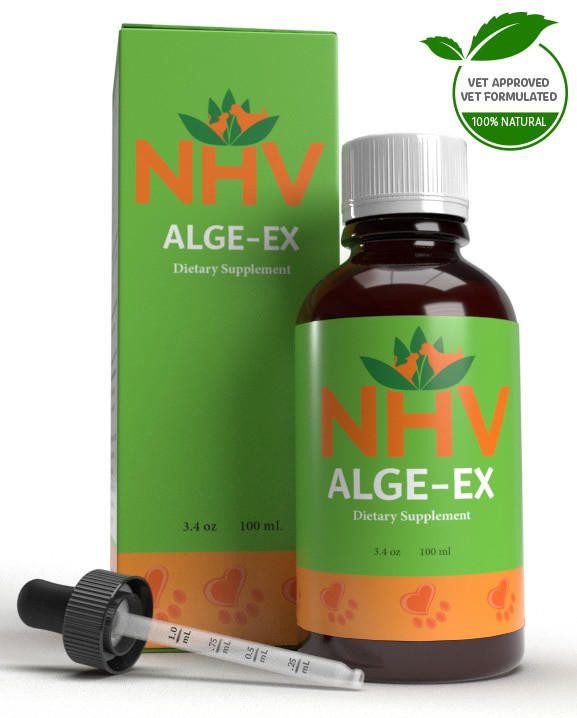
Support for Seasonal Allergy in Dogs
buy 2 and save $3
3 month supply for a small to medium size pet.
Fast and effective relief for your dog’s seasonal environmental allergy by reducing symptoms associated with allergies in dogs caused by pollen, mold, and more.

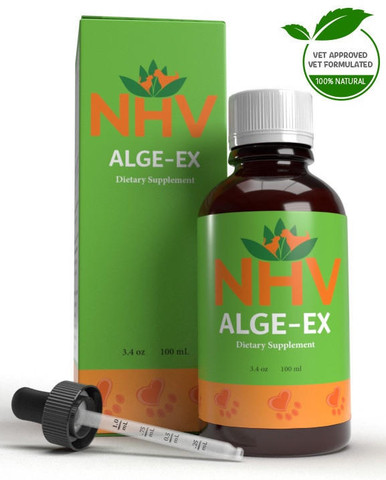
Fast and effective relief for your dog’s seasonal environmental allergy by reducing symptoms associated with allergies in dogs caused by pollen, mold, and more.

Dogs can have seasonal allergies just like people. A dog’s immune system will react to everyday allergens found in the environment. Like people, dogs can have an allergy to pollen, mold, grass, ragweed, and dust mites. They can also be allergic to certain household products such as cleaners, carpet fibers, carpet deodorizers, insecticides, rubber, etc. and contract contact dermatitis.
Your pet’s immune system can overreact to these common unharmful environmental substances. You can help support your pet’s immune reaction to these airborne irritants by using safe and natural herbal supplements.
It’s best to first ensure that your dog has a seasonal allergy and is not dealing with skin allergies or food allergies. If you suspect this, our pet experts can offer different types of suggestions to help, like an elimination diet or novel protein diet for food allergies.
Alge-Ex is made with natural ingredients that are powerful against the causes of allergies, but gentle on your pet’s body. It was formulated by a holistic veterinarian and a master herbalist with a combined experience of over 50 years using plant extracts such as eyebright, feverfew, and European goldenrod" (2 instances). The natural properties of these ingredients help to reduce inflammation and irritation, and regulate your pet’s histamine response.
Bathing your pet is also an excellent way of helping your dog cope with a seasonal allergy. Bathing helps remove allergens and also provides relief. Make sure to give your pet plenty of filtered water.
Never attempt to diagnose your dog on your own. Your vet will be able to perform the required tests and make the necessary suggestions.
Eyebright - An herb that has a long history of use for its anti-inflammatory, antibacterial, antifungal, anticatarrhal, and antiviral activities. Due to its anti-inflammatory properties, eyebright is used for upper respiratory tract infections, hay fever, sinusitis, and catarrh (inflammation of the mucous membranes). As an astringent, it is used for dry congestion. It is considered to be useful for seasonal allergies and other nasal irritations in dogs. It also relieves itchy eyes.
Ginger - A pungent and aromatic root used as a spice to enhance flavor in food. The part used is the rhizome which has been used for thousands of years for nausea and gastrointestinal relief. Research has shown that ginger has excellent antioxidant and anti-inflammatory properties.
Feverfew - An herb originally native to Eastern Europe. It has been used to reduce migraines. Studies have shown that feverfew inhibits the release of histamine and serotonin. It is considered to be very safe for dogs and cats, and is used as an alternative to aspirin, which can be toxic to cats.
European Golden Rod - An herb with anti-inflammatory, anticatarrhal, and antioxidant properties. It helps increase renal blood flow and the glomerular filtration rate without stimulating the loss of sodium and chloride.
Echinacea - In human and animal experiments, Echinacea preparations have been shown to have immunostimulant effects. Its defense against microorganisms help the body fight infections and remove invading bacteria. Echinacea also supports the lymph system, which in turn expels waste from the tissues.
Select your pet's weight to determine the correct dose.
To be taken twice daily. Determine your pet’s weight and then use the easy chart below to determine the correct dose. This is the minimum dosage.
Pet's Weight Dosage
0 - 15 lb = 0.5 ml
16 - 30 lb = 1.0 ml
31 - 45 lb = 1.5 ml
46 - 60 lb = 2.0 ml
61 - 75 lb = 2.5 ml
Over 75 lb = 3.0 ml
How to Administer: Shake well before use. The easiest method is to use the dropper provided and place the drops into your pet’s food or favorite treat. You can also use the dropper and squirt directly into the pet’s mouth. Some pets can be finicky, if this occurs consider hiding the drops in foods most pet’s love such as fish, chicken, yogurt, or a favorite treat. If your pet only eats dry food then soak a few kibbles at feeding time.
For Best Results
Herbal dietary supplements are beneficial to the health and well-being of your pet and are safe for long-term use. Every pet responds to natural herbal supplements differently, therefore it is important to be consistent and administer the product daily. Supplements generally take two to four weeks to take effect, however this will vary from one animal to the next.
Product Storage
All NHV Natural Pet Products are pure herbal extracts and contain no artificial additives, preservatives, or coloring. Shelf life after opening is 6 months and must be refrigerated after opening.
Cautions and Contraindications
Do not use Alge-Ex in pregnant or nursing animals.
Speak to your vet before using our products. A second visit is recommended if your pet’s condition does not improve, or deteriorates after continued use of the supplements.
All information provided by NHV Natural Pet Products is for educational purposes only.
Dogs can have seasonal allergies just like people. A dog’s immune system will react to everyday allergens found in the environment. Like people, dogs can have an allergy to pollen, mold, grass, ragweed, and dust mites. They can also be allergic to certain household products such as cleaners, carpet fibers, carpet deodorizers, insecticides, rubber, etc. and contract contact dermatitis.
Your pet’s immune system can overreact to these common unharmful environmental substances. You can help support your pet’s immune reaction to these airborne irritants by using safe and natural herbal supplements.
It’s best to first ensure that your dog has a seasonal allergy and is not dealing with skin allergies or food allergies. If you suspect this, our pet experts can offer different types of suggestions to help, like an elimination diet or novel protein diet for food allergies.
Alge-Ex is made with natural ingredients that are powerful against the causes of allergies, but gentle on your pet’s body. It was formulated by a holistic veterinarian and a master herbalist with a combined experience of over 50 years using plant extracts such as eyebright, feverfew, and European goldenrod" (2 instances). The natural properties of these ingredients help to reduce inflammation and irritation, and regulate your pet’s histamine response.
Bathing your pet is also an excellent way of helping your dog cope with a seasonal allergy. Bathing helps remove allergens and also provides relief. Make sure to give your pet plenty of filtered water.
Never attempt to diagnose your dog on your own. Your vet will be able to perform the required tests and make the necessary suggestions.
Eyebright - An herb that has a long history of use for its anti-inflammatory, antibacterial, antifungal, anticatarrhal, and antiviral activities. Due to its anti-inflammatory properties, eyebright is used for upper respiratory tract infections, hay fever, sinusitis, and catarrh (inflammation of the mucous membranes). As an astringent, it is used for dry congestion. It is considered to be useful for seasonal allergies and other nasal irritations in dogs. It also relieves itchy eyes.
Ginger - A pungent and aromatic root used as a spice to enhance flavor in food. The part used is the rhizome which has been used for thousands of years for nausea and gastrointestinal relief. Research has shown that ginger has excellent antioxidant and anti-inflammatory properties.
Feverfew - An herb originally native to Eastern Europe. It has been used to reduce migraines. Studies have shown that feverfew inhibits the release of histamine and serotonin. It is considered to be very safe for dogs and cats, and is used as an alternative to aspirin, which can be toxic to cats.
European Golden Rod - An herb with anti-inflammatory, anticatarrhal, and antioxidant properties. It helps increase renal blood flow and the glomerular filtration rate without stimulating the loss of sodium and chloride.
Echinacea - In human and animal experiments, Echinacea preparations have been shown to have immunostimulant effects. Its defense against microorganisms help the body fight infections and remove invading bacteria. Echinacea also supports the lymph system, which in turn expels waste from the tissues.
Select your pet's weight to determine the correct dose.
To be taken twice daily. Determine your pet’s weight and then use the easy chart below to determine the correct dose. This is the minimum dosage.
Pet's Weight Dosage
0 - 15 lb = 0.5 ml
16 - 30 lb = 1.0 ml
31 - 45 lb = 1.5 ml
46 - 60 lb = 2.0 ml
61 - 75 lb = 2.5 ml
Over 75 lb = 3.0 ml
How to Administer: Shake well before use. The easiest method is to use the dropper provided and place the drops into your pet’s food or favorite treat. You can also use the dropper and squirt directly into the pet’s mouth. Some pets can be finicky, if this occurs consider hiding the drops in foods most pet’s love such as fish, chicken, yogurt, or a favorite treat. If your pet only eats dry food then soak a few kibbles at feeding time.
For Best Results
Herbal dietary supplements are beneficial to the health and well-being of your pet and are safe for long-term use. Every pet responds to natural herbal supplements differently, therefore it is important to be consistent and administer the product daily. Supplements generally take two to four weeks to take effect, however this will vary from one animal to the next.
Product Storage
All NHV Natural Pet Products are pure herbal extracts and contain no artificial additives, preservatives, or coloring. Shelf life after opening is 6 months and must be refrigerated after opening.
Cautions and Contraindications
Do not use Alge-Ex in pregnant or nursing animals.
Speak to your vet before using our products. A second visit is recommended if your pet’s condition does not improve, or deteriorates after continued use of the supplements.
All information provided by NHV Natural Pet Products is for educational purposes only.
discomfort support

Discomfort Relief, Digestive Support, and Dog Appetite Booster
buy 2 and save $3
3 month supply for a small to medium size
Yucca for dogs is an all-natural supplement that can be helpful in many circumstances by providing symptom relief related to inflammation, discomfort, and loss of appetite.


Yucca for dogs is an all-natural supplement that can be helpful in many circumstances by providing symptom relief related to inflammation, discomfort, and loss of appetite.

Yucca root is widely used in dog food as well as in other pet foods. It is an herb that is highly nutritive as it is rich in vitamin C, beta-carotene, B vitamins, magnesium, iron, calcium, manganese, protein, niacin, and phosphorus. Yucca contains two very beneficial compounds: sarsasapogenin and smilagenin. These two compounds work on the mucous membranes of the small intestine. These compounds help with the penetration and absorption of minerals and vitamins. Sarsasapogenin and Smilagenin are known as steroidal saponins (phytosterols), which act as precursors to corticosteroids produced naturally by the body.
Steroidal-saponins support the immune function of the body while stimulating and supporting the production of its own corticosteroids and corticosteroid–related hormones. Due to this action, studies conducted on yucca have shown that it may be beneficial and effective for discomfort and inflammation in conditions such as arthritis. Yucca may also be effective as an appetite booster in dogs and may also help reduce the production of urease, which contributes to the unpleasant odors of urine and feces in some dogs.
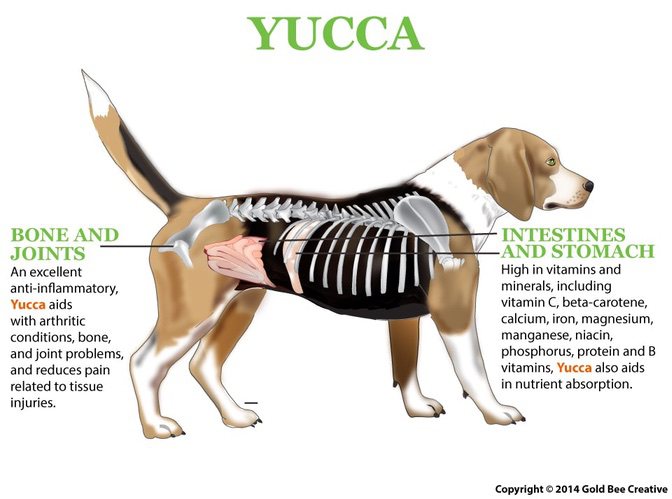
Yucca for dogs is commonly used for supporting arthritis, as an anti-inflammatory, nutritive, antitumor, and digestive. Yucca for dogs is considered a nutritive herb because it is rich in vitamins and minerals like vitamin C, beta-carotene, B vitamins, magnesium, iron, calcium, manganese, protein, niacin, and phosphorus.

Select your pet's weight to determine the correct dose.
To be taken twice daily. Determine your pet’s weight and then use the easy chart below to determine the correct dose. This is the minimum dosage.
Pet's Weight Dosage
0 - 15 lb = 0.5 ml
16 - 30 lb = 1.0 ml
31 - 45 lb = 1.5 ml
46 - 60 lb = 2.0 ml
61 - 75 lb = 2.5 ml
Over 75 lb = 3.0 ml
How to Administer: Shake well before use. The easiest method is to use the dropper provided and place the drops into your pet’s food or favorite treat. You can also use the dropper and squirt directly into the pet’s mouth. Some pets can be finicky, if this occurs consider hiding the drops in foods most pet’s love such as fish, chicken or yogurt or a favorite treat. If your pet only eats dry food then soak a few kibbles at feeding time.
For Best Results: Herbal dietary supplements are beneficial to the health and well-being of your pet and are safe for long-term use. Every pet responds to natural herbal supplements differently, therefore it is important to be consistent and administer the product daily. Supplements generally take two to four weeks to take effect, however this will vary from one animal to the next.
Product Storage: All NHV Natural Pet Products are pure herbal extracts and contain no artificial additives, preservatives or coloring. Shelf life after opening is 6 months and must be refrigerated after opening.
Cautions and Contraindications: Do not use Yucca in pregnant or nursing animals. Speak to your vet before using our products. A second visit is recommended if your pet’s condition does not improve, or deteriorates after continued use of the supplements. All information provided by NHV Natural Pet Products is for educational purposes only.
Yucca root is widely used in dog food as well as in other pet foods. It is an herb that is highly nutritive as it is rich in vitamin C, beta-carotene, B vitamins, magnesium, iron, calcium, manganese, protein, niacin, and phosphorus. Yucca contains two very beneficial compounds: sarsasapogenin and smilagenin. These two compounds work on the mucous membranes of the small intestine. These compounds help with the penetration and absorption of minerals and vitamins. Sarsasapogenin and Smilagenin are known as steroidal saponins (phytosterols), which act as precursors to corticosteroids produced naturally by the body.
Steroidal-saponins support the immune function of the body while stimulating and supporting the production of its own corticosteroids and corticosteroid–related hormones. Due to this action, studies conducted on yucca have shown that it may be beneficial and effective for discomfort and inflammation in conditions such as arthritis. Yucca may also be effective as an appetite booster in dogs and may also help reduce the production of urease, which contributes to the unpleasant odors of urine and feces in some dogs.

Yucca for dogs is commonly used for supporting arthritis, as an anti-inflammatory, nutritive, antitumor, and digestive. Yucca for dogs is considered a nutritive herb because it is rich in vitamins and minerals like vitamin C, beta-carotene, B vitamins, magnesium, iron, calcium, manganese, protein, niacin, and phosphorus.

Select your pet's weight to determine the correct dose.
To be taken twice daily. Determine your pet’s weight and then use the easy chart below to determine the correct dose. This is the minimum dosage.
Pet's Weight Dosage
0 - 15 lb = 0.5 ml
16 - 30 lb = 1.0 ml
31 - 45 lb = 1.5 ml
46 - 60 lb = 2.0 ml
61 - 75 lb = 2.5 ml
Over 75 lb = 3.0 ml
How to Administer: Shake well before use. The easiest method is to use the dropper provided and place the drops into your pet’s food or favorite treat. You can also use the dropper and squirt directly into the pet’s mouth. Some pets can be finicky, if this occurs consider hiding the drops in foods most pet’s love such as fish, chicken or yogurt or a favorite treat. If your pet only eats dry food then soak a few kibbles at feeding time.
For Best Results: Herbal dietary supplements are beneficial to the health and well-being of your pet and are safe for long-term use. Every pet responds to natural herbal supplements differently, therefore it is important to be consistent and administer the product daily. Supplements generally take two to four weeks to take effect, however this will vary from one animal to the next.
Product Storage: All NHV Natural Pet Products are pure herbal extracts and contain no artificial additives, preservatives or coloring. Shelf life after opening is 6 months and must be refrigerated after opening.
Cautions and Contraindications: Do not use Yucca in pregnant or nursing animals. Speak to your vet before using our products. A second visit is recommended if your pet’s condition does not improve, or deteriorates after continued use of the supplements. All information provided by NHV Natural Pet Products is for educational purposes only.